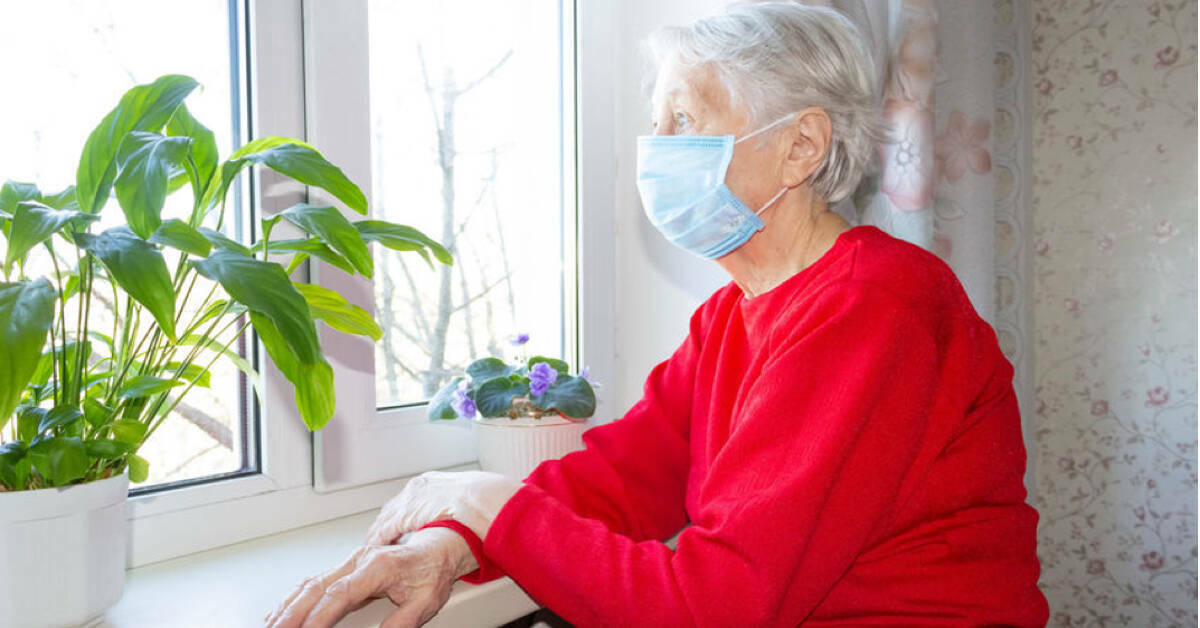
First published on Medium 5/3/2020
There aren’t many whose lives haven’t been affected by the spread of the novel coronavirus. The COVID-19 pandemic has taken children out of school and left parents wondering where their next paycheck will come from. Most folks going through these trials, however, haven’t been as hard hit as elderly citizens. In addition to making up the highest-risk group among us, they’re also often in situations where exposure is a foregone conclusion.
When coronavirus hit nursing homes, the potential effects were simultaneously unimaginable and frighteningly expected. Many senior care centers had to be evacuated when workers – fearing for their health – simply stopped showing up for work. As of this post, US nursing homes had more than 10,000 fatalities and accounted for half of total fatalities in Europe
These stories are only a sampling of what’s going on.
Elderly care professionals aross the country are facing difficult realities. Of
course, this pandemic will eventually be brought under control. For those who
faced coronavirus in assisted living, though, nothing will ever be the same. The lessons of the current pandemic will
reshape the way eldercare is defined and delivered in a post-coronavirus world
to meet the needs of a highly diverse and rapidly growing senior population.
COVID-19 Puts Eldercare in the Spotlight
More
than 150 care facilities in over half of all US states have at least one
resident with symptoms of COVID-19.
In the wake of crises nursing homes and long term care
facilities, have stepped
up efforts to protect them and those who
care for them from exposure to COVID-19.
Nursing homes and other residential facilities are
limiting residents’ contact with the outside world and residential staff must
take special precautions with cleaning and disinfecting, and when providing
direct care to residents including new recommendations and regulations for
people such as home health aides and physical therapists.
Local businesses and services, too, acknowledging this
high-risk population with initiatives like special senior shopping hours,
volunteer check-ins and food deliveries.
These measures point toward a model for redefining a “new
normal” for senior services in a post-coronavirus world.
Pandemic Preparation Plans
Become Crucial
If it did nothing else, the COVID-19 outbreak served as
a bleak wake-up call. Government, nonprofit and private organizations have been
touting the necessity of proper disaster preparedness for years. In 2013, the
Federal Emergency Management Agency (FEMA) published
a guide titled Elderly Need Special
Plans to be Ready for a Disaster. In 2008, the Center for Infectious
Disease Research and Policy proclaimed
Many Nursing Homes Lack Pandemic Plan.
Any emergency management professional will attest to the
fact that preparation is key in surviving pandemics, but for years, this key
aspect was often overlooked by professionals in elderly care. The problem is
that people become complacent when problems aren’t actively occurring. This
issue gets even worse when they see so many potential emergencies (e.g. Ebola,
H1N1) sail by without affecting them. It’s like watching coastal residents
choosing to stay home while a hurricane is bearing down upon them.
Unfortunately, the importance of pandemic preparation was
a hard lesson learned. Coronavirus hit the senior care industry like a ton of
bricks, and in many cases, they failed to acknowledge the dangers that were so
obvious to public health professionals. Whether it’s an inherent need to
protect the lives entrusted to them or a fear of the eventual onslaught
of litigation, pandemic preparation in assisted living communities is going
to be taken much more seriously.
Eldercare Services Improve Staff Training and Support
On average, direct care providers in all areas of
eldercare earn $11 per hour. Many have no formal training or
qualifications other than personal experience caring for a relative. On the job
training is often minimal, and there are few if any opportunities for
advancement. And because wages are low and opportunities limited, many direct
care staff must work at multiple jobs in order to make a living wage. As
workers juggle multiple clients, that makes it easy to spread infection from
one location to another.
In the post-coronavirus world, eldercare services of all
kinds will
need to invest more resources toward recruiting skilled staff and providing
essential training on protocols for preventing infection. Some eldercare
advocates have called for higher wages for both home care and residential
workers in an effort to find and retain quality staff, and that will become a
key issue in making sure that vulnerable seniors receive the best care possible
during a pandemic.
Social Distancing is Here to
Stay
Anyone reading this has likely felt the sting of social
distancing. While many people may simply be annoyed by the inability to grab a
drink with friends or catch the newest movie in theaters, elderly individuals
face a much harsher reality. Social
distancing conventions will shape human interactions of all kinds, with less
emphasis on social touching such as hugs and handshakes, and more awareness of
the consequences of every cough or sneeze in the presence of older adults.
Research
consistently shows that seniors in social isolation experience increased
depression and suicidal thoughts on top of negative changes to their immune and
proinflammatory responses.
Even with this being the case, it’s likely that the
elderly have taken note of the dangers they face and plan to respond
accordingly. This means more and more aging individuals will opt to remain
inside their homes rather than moving to assisted living facilities. The trend
has already been moving in this direction. Between 2004 and 2015, the number of
nursing home residents dropped from 1.5 million to 1.3 million – and this
was while the aging American population was
ballooning.
It’s difficult to deny that many nursing home residents
affected by coronavirus would’ve been better off in their own homes. This is a
realization that aging citizens and their adult children will have to deal
with. With increasing at-home care options and seniors becoming more
tech-savvy, though, opting to remain in their homes is both conceivable and
potentially beneficial.
Nuclear Family Status Changes
Cynics and critics have long decried the disintegration
of the nuclear family. Of course, concerns such as these are often overblown.
Even if the number of two-parent households has been decreasing, the majority
of American children still live in these traditional family units. As
Rebecca Onion over at Slate has
pointed out, though, COVID-19 has taught many parents that the nuclear family
is simply
not enough. This reality will have major implications for senior care in
the future.
Parents who are struggling to deal with their out-of-school
children while also handling employment issues would typically be begging their elderly parents for help
at this point. Unfortunately, it may not be safe for them to do so. Once the
coronavirus has released its death grip on the world, though, the adult
children of aging individuals might not be as quick to consider assisted living
communities.
One could also envision the nuclear family permanently
extending outside of the parents-and-children model. Everyone thought they’d be
able to spend time with their elderly family members with occasional visits,
but now there’s no indication of when this might resume. This has resulted in
grandchildren “visiting” their grandparents via FaceTime and Skype. Once this
pandemic has passed, people are likely to put renewed focus on these often
overlooked relationships.
Regulations Regarding
PPE Stockpiles in Nursing Homes
Medical workers experienced severe
shortages of the personal protective equipment (PPE) that were needed in
minimizing their exposure to COVID-19. Many had to reuse
masks or forego protection altogether. What’s even more discouraging is the fact that
many assisted living facilities fall into regulatory black holes. In
California, for instance, health workers were only mandated to wear PPE when a
case of COVID-19 has been identified in their facility. Since the virus could
take up to two weeks to present symptoms, though, it’s possible that
therapists, doctors, assistants and other nursing home employees could be unknowingly
spreading the pathogen.
It’s important to note that this California regulation
could change at any time, and this is likely something we’ll increasingly see
in the coming months and years. The probability is also very high that
increasing attention will be given to citations in the future. A full 75
percent of nursing homes have been hit with citations for failing to
control and monitor infections in the past few years. This statistic has gained
new significance in the world of COVID-19, so everyone should expect increased
and better enforced PPE regulations.
Changes to the Senior
Housing Real Estate Industry
Although it’s a niche property type, senior housing has
gained a prominent place in the commercial real estate industry in recent
years. The investment market into this property type has
reached upwards of $270 billion. Now that coronavirus is upending the
assisted living world, though, it would be naïve to not expect significant
changes in this area of the real estate industry.
Even elderly citizens who choose not to stay in their
homes will be far more selective regarding their eventual senior housing.
They’ve seen daily on the news what can happen when assisted living workers are
unprepared and facilities don’t have the resources to respond to predictable
emergencies.
This means professionals in the senior housing industry
will have to rethink and modernize their offerings to attract and maintain
residents. This will be done in many ways, but the real focus will be on
technology. Remote patient monitoring, Telehealth, voice activation tech, and
free Wi-Fi will be just a few of the focuses. This will ensure all needs –
physical, emotional and social – are met while maintaining distance when
necessary.
Considering all the likely changes to assisted living
after coronavirus has run its course, though, the senior housing market is only
the tip of the iceberg. Big changes are coming – and in reality, they should’ve
gotten here much sooner.


